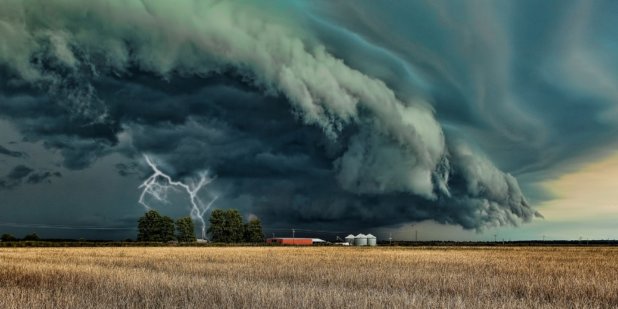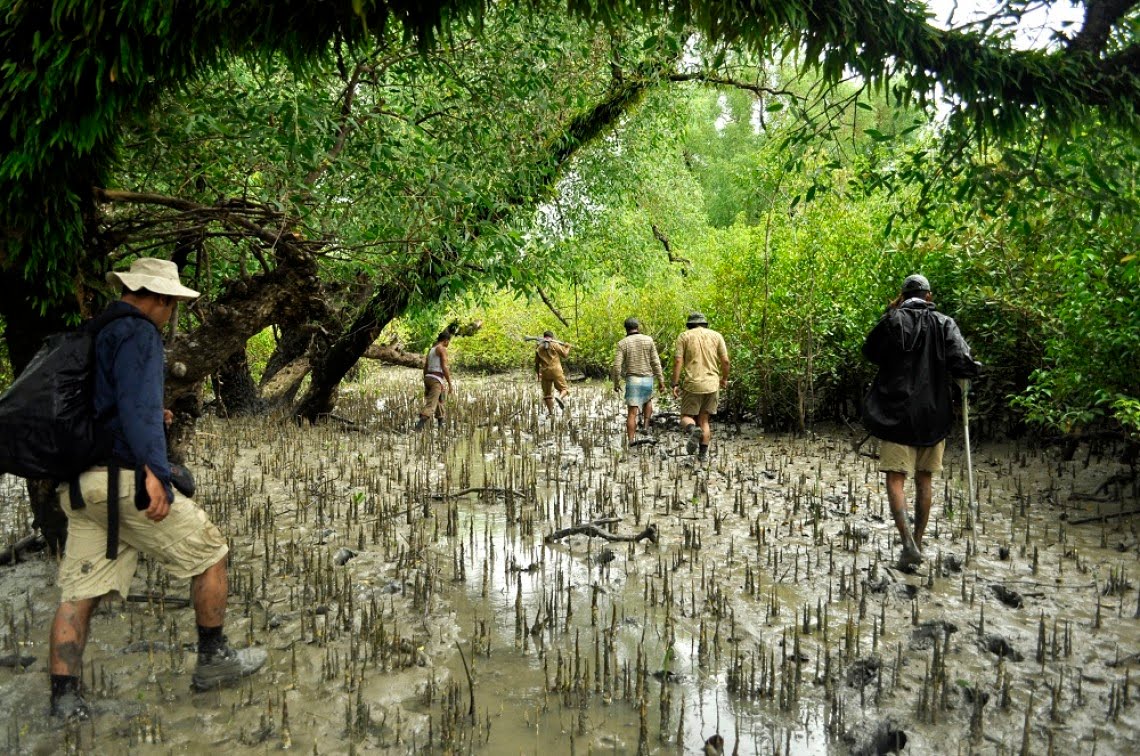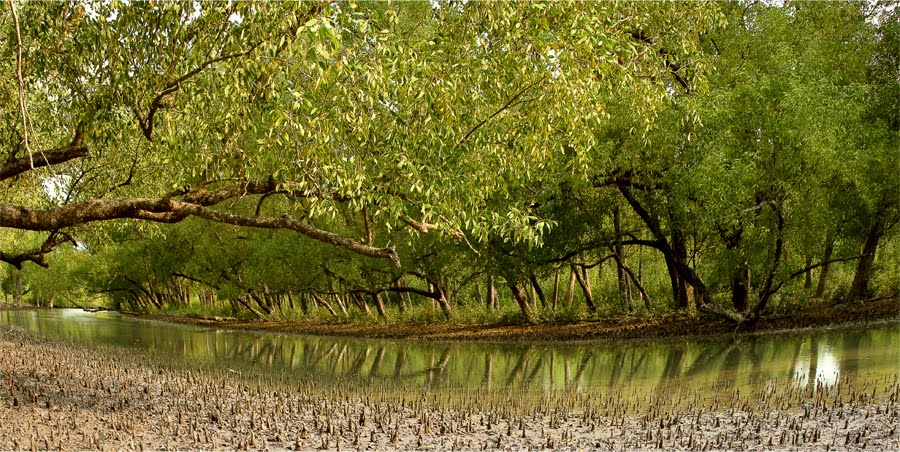- About
- Topics
- Picks
- Audio
- Story
- In-Depth
- Opinion
- News
- Donate
-
Signup for our newsletterOur Editors' Best Picks.Send
Read, Debate: Engage.


Since 2015, Oemar Idoe has been the Principal Advisor of the “Management of the Sundarbans Mangrove Forest for Biodiversity Conservation and Increased Adaptation to Climate Change Project” (SMP) at the Deutsche Gesellschaft für Internationale Zusammenarbeit (GIZ) in Dhaka, Bangladesh. He has been working with GIZ since 2011 on topics related to co-management of protected areas and sustainable management of natural resources among others in Cameroon.
fairplanet: According to Climate Risk Index 2016, Bangladesh ranks among the most vulnerable nations to the impacts of climate change. Why is Bangladesh so especially threatened by climate change?
Its topography is dominantly flat and in the majority of the country only little elevated from sea level. At the same time, Bangladesh is the most densely populated country in the world. As climate change progresses, extreme weather events such as intense precipitation, droughts as well as cyclones of increasing strength and frequency are expected.
At the same time, the sea water level gradually rises causing an increasing level of saltwater intrusion within the delta region. Although much progress has been made in recent years (Bangladesh recently was taken up in the list of lower middle income countries), poverty remains an issue (Bangladesh ranked 139 according to the Human Development Index 2016) that hampers the resilience building of people and the economy as to the negative impacts of climate change.
This not only threatens human livelihoods, settlements and infrastructure, but will also leads to changes in the natural environment, such as the unique Sundarbans mangrove ecosystem.
One region of exceptional importance seems to be the Sundarbans mangrove forest? Why is it so crucial for Bangladesh and beyond?
Covering a 10.000 km2 area, the Sundarbans constitute the world’s largest contiguous mangrove forest which extends across India and Bangladesh. The Sundarbans Mangrove Forest (SMF), a UNESCO world heritage and RAMSAR site, extends over 6.000 km2 in Bangladesh.

Due to its inaccessibility, the biodiverse Sundarbans ecosystem has preserved a unique range of animal species (birds, fish, crocodiles, snakes, axis deer, monkeys, etc.) which is of global importance. The Sundarbans represents the last remaining habitat for the critically endangered Bengal tiger in Bangladesh.
The flora is comprised of a rich mosaic of different types of vegetation; within the delta, for example, half of all known mangrove species can be found.
Millions of people living in the periphery of the Sundarbans directly or indirectly depend on a functioning mangrove ecosystem for their livelihood and protection against extreme weather events of increasing frequency and intensity such as cyclones. On a larger scale, the forest plays an indispensable role as breeding and nursery ground for economically important fish species in the Bay of Bengal. Through this function the mangrove forest supports income generation and food security far beyond the direct boundaries of the forest and significantly contributes to the national economy of Bangladesh and of the wider region.
In 2015, German development agency GIZ started a project to protect the Sundarbans. Could you tell us more about the details? What is key to protect the Sundarbans, and how will you achieve a long term protection?
Several external factors are threatening the long-term protection of the mangrove forest: Up-stream agricultural practices and hydrologic interventions as well as increasing industrial development of the periphery are gradually deteriorating the mangrove ecosystem. These stressors on the forest are exacerbated by the negative impacts of climate change such as extreme weather events and sea level rise putting both peoples’ lives and properties in the delta as well as the integrity of the ecosystem at risk. While no one lives within the Sundarbans mangrove forest in Bangladesh, the growing population pressure in the periphery leads to the unsustainable use of natural resources when people enter the mangrove forests – some legally (fishing), some illegally (poaching) – to sustain their livelihoods.
"The economic losses related to a progressing deterioration of the forest are restricting the rights of men and women alike to enjoy an adequate standard of living."
The Bangladesh Forest Department (BFD) as the lead authority has the difficult task to manage this complex ecosystem under threat. It faces several managerial challenges such as limited funding for protected area management or overlapping mandates over the area requiring strong coordination.
The GIZ has been commissioned by the German Federal Ministry for Economic Cooperation and Development to technically support the BFD to protect the Sundarbans mangrove forest and to ensure sustainable management of natural resources. In order to do so, it is key to incorporate resource users from local communities. This is being supported through strengthening the co-management approach at both the local community and government (BFD) sides. We also focus on increasing the capacity of the BFD staff for patrolling, monitoring and data analyses. Inter-stakeholder- and inter-sectoral-coordination is another crucial element for long term protection.
How does the co-operation between GIZ and all the organisations, institutions and companies involved in the Sundarbans project look like? Are local communities involves and to what extend?
We at GIZ aim at strengthening already existing co-management structures in order to ensure that resource dependent community members can express their interests and partake in decision making processes. For example, together with the BFD, GIZ carried out a participatory governance assessment at community level. The outcome will help to better shape the collaboration between the BFD and the local communities adjacent to the mangrove forest through enhancing the co-management approach.
GIZ also supports the BFD in fulfilling its role as the coordinating body for all activities implemented by different government agencies, NGOs and other donors. Among others we successfully established a coordination mechanism for patrolling and data analyses at the local level.
What will be the costs for the project, when it'll be finished in 2019?
BMZ commissioned up to EUR 5 Million for the implementation for this particular project. Activities piloted under the project are also continued to be funded by the Government of Bangladesh itself and other donors.
Could you give an outlook on how the Sundarbans will be protected in 2009, when the project will end?
Idoe: It is our aim that we will have supported BFD in its capacity to protect and manage the mangrove forest and to apply the principles of co-management. Local people dependent on the resources provided by the forest are already actively taking part in co-management and their needs are recognized and addressed in decision making processes. Regular patrols will monitor and control illegal activities, data analyses will facilitate management decisions that will contribute to biodiversity conservation.